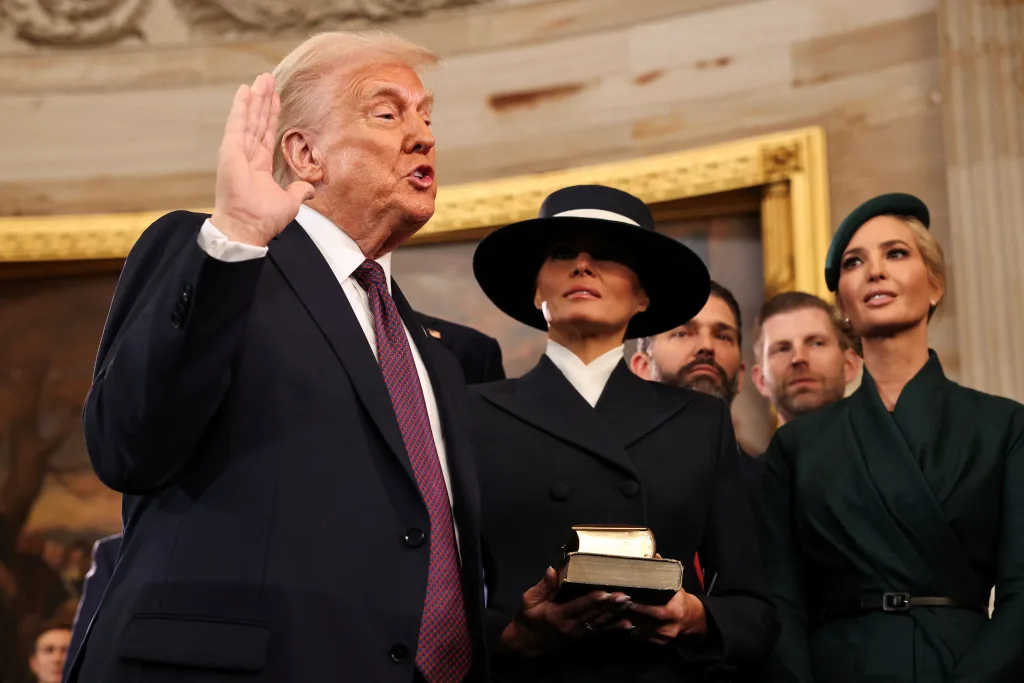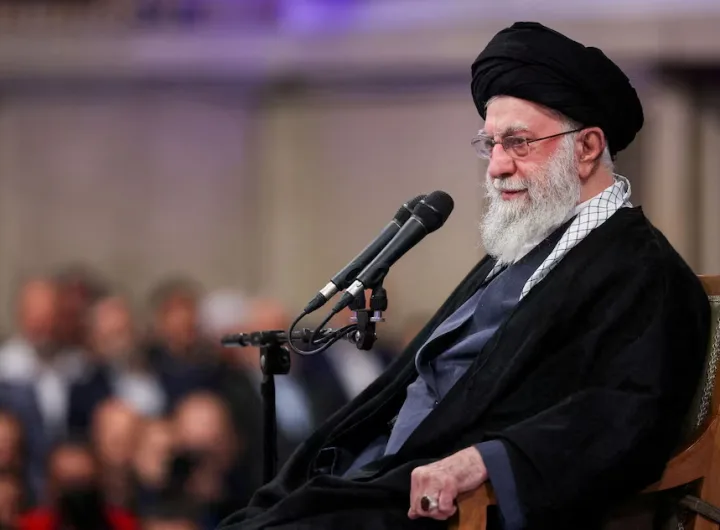
Trump vowed to implement stricter measures regarding transgender military personnel/Reuters
During his January 20 inauguration, Trump pledged to implement stricter measures regarding transgender military personnel.
Following nearly two decades of service with the US Army, 39-year-old Maj Kara Corcoran was on the verge of completing graduation from a prestigious military leadership course when an unexpected obstacle arose.
Just 48 hours prior to the graduation ceremony, Kara received instructions requiring compliance with male military standards.
This directive mandated wearing men’s uniforms and removing the lengthy blonde hair that had been grown since declaring female identity to the Army in 2018.

The order originated from Pentagon leadership and was communicated through the command structure at Fort Leavenworth, Kansas.
“Nothing about me is a man, but we’re going to force me into male regs just so I can walk across the stage with my peers,” he said in the hours leading up to the ceremony.
“It’s not my choice to cut my hair. I’m doing it because I have to.”
This situation exemplifies the impact on thousands of transgender military personnel following President Donald Trump’s January announcement of comprehensive restrictions barring their service across all military positions.

Unlike the previous prohibition during Trump’s initial presidency, which primarily targeted new enlistees while permitting certain exceptions for current personnel, the 2025 directive eliminates nearly all exemptions.
Military data indicates approximately 4,200 transgender individuals currently serve in the armed forces, though alternative assessments suggest the number could reach 10,000.
The updated regulations declare that any history or medical diagnosis of gender dysphoria—defined as the condition where individuals experience discord between their gender identity and birth-assigned sex—as “incompatible with the high mental and physical standards necessary for military service.”
Trump’s executive directive articulated his view that “the Armed Forces have been afflicted with radical gender ideology” and emphasized that the new approach would guarantee personnel remain “free of medical conditions or physical defects that may reasonably be expected to require excessive time lost from duty for necessary treatment or hospitalisation.”
The directive further specified that “a man’s assertion that he is a woman, and his requirement that others honour this falsehood, is not consistent with the humility and selflessness required of a service member.”
Kara’s military career has encompassed the majority of adult life, including combat assignments in Afghanistan serving as both platoon leader and company commander while living as male before transitioning.
Following the transition, Kara reports having legally modified both name and gender designation while adopting female pronouns.
Military policy regarding transgender service members has undergone significant fluctuations over recent years as different administrations have taken office:
• 2016: The Obama administration eliminated restrictions on transgender military service, providing access to military-funded gender-related medical treatments
• 2017: Trump implemented a ban on transgender service citing concerns about medical expenses and operational disruptions.
• 2021: The Biden administration reinstated transgender service rights through executive action.
• 2025: Trump’s renewed prohibition orders military installations to begin discharge procedures for personnel diagnosed with gender dysphoria.
“For a long time, I stayed silent,” says Kara. Kara’s initial enlistment in 2008 occurred during a period when women were also prohibited from combat assignments.
Kara’s personal life included marriage to a woman and children, though the relationship deteriorated as identity struggles intensified.
The decision to come out as transgender occurred in 2018, followed by hormonal therapy and surgical procedures. Despite Trump’s 2017 restrictions, Kara maintained support from superior officers who continued operating under previous policy frameworks.
According to Kara’s account to the BBC, the transition process enhanced military performance.
“It’s made me more focused, more resilient,” he says.
“There’s a common misconception that transitioning is a liability. For me, it’s been the opposite.”
Under the current Trump administration policy, Kara faces notification that failure to depart voluntarily could result in forced removal through involuntary separation procedures.
Involuntary separation constitutes a discharge process affecting service members who decline to leave voluntarily. This procedure applies to all military personnel regardless of their role in combat operations.
Beyond employment termination, affected individuals risk forfeiture of various benefits including retirement funds, medical coverage, and disability compensation.
Defense Department guidelines indicate that involuntary separations may result in benefit reductions of up to fifty percent compared to voluntary departures—potentially representing losses of tens of thousands of dollars.
Nevertheless, Maj Kara Corcoran maintains determination to remain in service.
“I’m not going to get voluntarily separated,” he says.
“I’ll go through the involuntary separation and what that looks like and how horrific they want to make that for me and other service members.”

 Iran Shuts Down Internet As Supreme Leader Issues Warning To Demonstrators
Iran Shuts Down Internet As Supreme Leader Issues Warning To Demonstrators ![US President Donald Trump shared an image on Truth Social depicting himself alongside CIA Director John Ratcliffe observing a US military operation in Venezuela from Palm Beach, Florida, on January 3, 2026 [@realDonaldTrump/Handout via Reuters]](https://www.lionscrib.com/wp-content/uploads/2026/01/WhatsApp-Image-2026-01-06-at-7.08.55-PM-720x530.webp) Why Trump Invaded Venezuela
Why Trump Invaded Venezuela  Burkina Faso Celebrates Security Progress And Food Independence In 2025
Burkina Faso Celebrates Security Progress And Food Independence In 2025  Why Peter Obi Defected To The ADC
Why Peter Obi Defected To The ADC  President Tinubu Insists New Tax Legislation Will Begin January 1, 2026
President Tinubu Insists New Tax Legislation Will Begin January 1, 2026  Catholic Priests Injured in Bandit Attack in Nasarawa
Catholic Priests Injured in Bandit Attack in Nasarawa  Trump Rejected Diddy’s Presidential Pardon Plea
Trump Rejected Diddy’s Presidential Pardon Plea